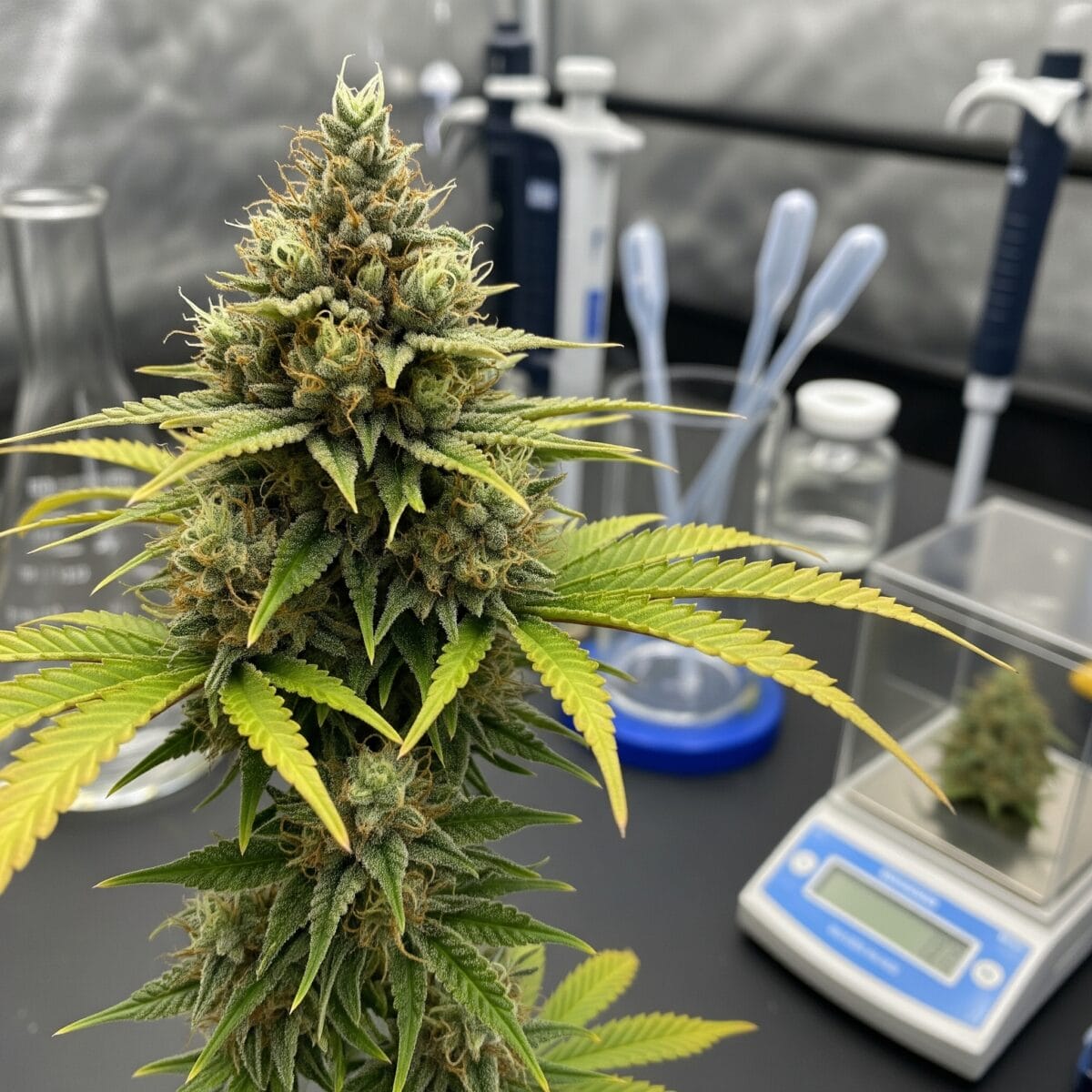While waves of change diffused across psychedelic science and research policy in Texas, bills such as Senate Bill (SB) 3 made cannabis research and medical cannabis access infinitely more difficult when it had already been a slog. I don’t know when cannabis was exiled from its psychedelic family, but a plant with a wider net of healing potential that goes beyond mental health (NASEM 2017)– which is extraordinarily valuable, don’t get me wrong– was orphaned by a group which includes chemically synthesized and intense substances such as the dissociative anesthetic, ketamine. A substance which I would not have selected as my champion for psychedelic-assisted therapy. I’m not bitter, I’m just frustrated.
Each individual psychedelic needs high-quality, double-blinded, and randomized controlled trials (RCTs) which establish therapeutic efficacy for one specific chemical compound for a handful of mental health conditions. After high-quality RCTs are conducted, it will not be an uphill battle to institute each one as an adequate form of treatment. Psychedelic policy which dedicates the required resources to conduct high-quality psychedelic research has been passed in the state of Texas once (HB 1802) and will be passed again (HB 3717; HB 4014).
Equally adequate cannabis research will require a significantly more vast and nuanced approach compared to any other psychoactive substance due to its complexity as a plant. High-quality cannabis science and research which could establish cannabis as an adequate treatment for an abundance of issues would require a myriad of insights and individually dedicated research projects– which I will detail later on. There are so many pathways and rabbit holes in cannabis research, even building the foundation for such research projects will demand a long and gradual effort. Ultimately, the sort of funding which will go into ibogaine research through HB 3717, 50 million US dollars, would be vivifying to the study of cannabis science and it would be priceless to patients who utilize hemp-derived and medical cannabis.
Implications of Psychedelic Policy in Texas
One research project can cost from one hundred thousand to tens of millions of US dollars. While the mechanism of action for ibogaine could be researched further, the therapeutic compound itself is generally static. In turn, ibogaine will be more quickly and efficiently researched than a complex plant such as cannabis. Ibogaine and other psychedelics are different from cannabis. Psychedelics are more easily pharmaceuticalized than cannabis and its multitude of therapeutic components and formulations. Nonetheless, government agencies, national organizations, universities, non-profits, and other stakeholders may be interested in sponsoring or even matching such research funding, as $50,000,000 can be spent rather quickly and these industries are going to be worth a whole lot more than that.
Ibogaine and other psychedelic substances are imbued with significantly more stigma due to their duration of effects, routes of administration, intensity, severe risks of drug-drug combinations, and their synthesization– in some cases. Ketamine, while existing as a dissociative anesthetic rather than a traditional entheogen or psychedelic, is fully covered by one US health insurer, Enthea. As a Texan, it is quite surprising to see such substances endowed with resources and support through state legislation.
HB 3717 (89) and SB 2308 (89) will create a $50 million research grant for ibogaine therapy trials. This amount of funding will cover an adequate number of research projects to establish ibogaine as a treatment for post-traumatic stress disorder (PTSD). Becoming a legitimate treatment entails many upgrades to ibogaine’s status as a medicine, such as insurance coverage, protecting the uninsured, training physicians, establishing clinical standards, securing Texan corporate interests through patents, medical research, product development, product manufacturing, and product distribution. These bills are not the first of their kind, but they are unique in that they establish a publicly available grant application. However, an institutional review board (IRB) will be chosen as an overseer to this research, to:
“verify the drug development trial research activity for scientific validation and authentication under the requirements of the United States Food and Drug Administration.”
At the last legislative session (87), HB 1802 was passed, which establishes PTSD and depression as potentially being remedied by, broadly, “psychedelic therapies… the use of MDMA, psilocybin, or ketamine to treat mental health or other medical conditions.” This session, HB 4014 (89) is likely to pass, and this bill reifies the goals of HB 1802 while extending the deadline for the review of its implementation. The research through 1802 and 4014 will be conducted by the Baylor College of Medicine (BCM) and the University of Texas at Austin (UT). It will be interesting to see if the chosen IRB for HB 3717’s ibogaine research grant will be through the same university systems or a separate one. It would also be interesting to see if cannabis could classify as a ‘psychedelic therapy’ under an amended or future version of the aforementioned house bills. Regardless, these bills spark hope for psychedelic science advocates across the nation, as their passage destigmatizes, affirms, and will ultimately benefit, patients, the psychedelic medicine industry, and the developing academic field of psychedelic science.
In addition to the previous factors, bills such as HB 3717 line the pockets of entities and organizations that partner with and sponsor such research. For instance, the research projects funded by HB 1802 are supported by local organizations such as Veterans Exploring Treatment Solutions (VETS) as well as federal agencies such as the National Institute of Mental Health (NIMH). None of this is wrong, in fact, this is absolutely wonderful. The only thing wrong about this situation is the fact that medical cannabis science isn’t getting the same kind of attention from Texas lawmakers, universities, local organizations, federal agencies, and perhaps, even Texan substance users.
The Potential Power of Texans
Increasing access to medical cannabis requires much more work to be done, considering the plethora of potential conditions it can treat as well as the vast multitude of formulation and administration types. Ibogaine is quite the novel medicine as well, with local interests having the capacity to become national leaders. With cannabis, Texas is totally behind on the industry side. However, Texans can rise to the top in terms of cannabis research and science.
There are so many priorities for medical cannabis science and research, priorities which may be recursive (Hartounian et al. 2021; Sera and Hempel-Sanderoff 2024). Such priorities could only be acted upon with support from Texan entities and stakeholders. With $50 million in research funding, Texan entities could:
Broaden the Study of Cannabis Science and Therapeutics
– Establish a nuanced understanding of endocannabinoid receptors, the endocannabinoid system (ECS), which is a part of the larger endocannabinoidome (eCBome), as well as the behavior of endocannabinoids such as anandamide and 2-AG
– Investigate the role of a cannabinoid compound, dose, form of administration, exposure, and duration of use in both short- and long-term effects
– Investigate the potential to target the ECS for specific effects such as pain-relief, anxiety-relief, increasing appetite, increasing focus, increasing drowsiness, homeostatic regulation, inflammation-relief and beyond
– Investigate variables within each cannabis formulation, each studied separately, as well as in combination with one another individually, and as broad-, full-, and total- spectrum formulations
– Investigate the pharmacology, the pharmacodynamics and the pharmacokinetics, of cannabinoids beyond THC, CBD, and CBG, across various demographic and medical populations
– Optimize formulations of cannabinoid, terpenoid, and flavonoid delivery to achieve consistent exposure at sites of action (receptors)
Promote and Facilitate Harm Reduction
– Establish standards and regulations for testing, cultivation, manufacturing quality, efficacy, and the safety of cannabis products before their release
– Identify potential harms in the context of long-term cannabis use
– Investigate drug-drug interactions
– Compare harms related to the use of cannabis and synthetic cannabinoids for medical purposes
– Establish population research methods to track self-prescribed cannabis use
– Understand how individual factors (demographic, psychological, genetic, comorbidity, polypharmacy) affect all of the aforementioned variables
– Investigate the consequences of advertising to children and adolescents and ban such behaviors
– Investigate the consequences of driving under the influence of cannabinoids
– Optimize toxicity and efficacy monitoring plans for physicians
Constitute Cannabis Education, Science, and Research
– Create a repository for clinician case study submissions which not only inform medical cannabis treatment plans, but inform the dynamics of physician-client relationships for future clinical research
– Establish education programs for vulnerable and at-risk patient populations
– Establish education programs for future researchers, future members of industry, and future academics
– Establish education programs for healthcare providers and physicians
– Improve the quality and transparency of study design, conduct, analysis and reporting of such studies
– Create systematic reviews which should provide sufficient detail to be of moderate or high confidence according to academic authorities
– Create properly randomized and double-blinded trials in populations with a defined condition
– Investigate ways of incentivizing the cannabis industry and other stakeholders to fund high-quality cannabis research
– Investigate ways of mitigating and preventing conflicts of interest in such research
Like psychedelic science, cannabis science must assume the form of its own multifaceted academic field. Medical psychedelic science and therapeutics (MPST) and medical cannabis science and therapeutics (MCST) should have their own departments within Texas universities wherein grants like the one created through HB 3717 would fund the origins of an academic field as well as multidisciplinary research which collaborates with local-, state-, and federal-level agencies, authorities, and organizations.
Concluding Remarks
May what has been done for ibogaine, for ketamine, for psilocybin, and for MDMA, be done for cannabis. However, cannabis science is a marathon, not a race. While the hemp-derived industry has its flaws, and I understand the sentiment behind regulating it, SB 3 ultimately harms such progress for cannabis. The acceptance of Californian medical cannabis in 1996, Coloradoan recreational cannabis in 2014, and hemp-derived cannabinoids in 2018 all facilitated in paving the path for progress and innovation in psychedelic science. I would argue that it is time for cannabis to catch up with its therapeutic contemporaries. It is time for cannabis treatment to embody meaningful, evidence-based, and patient-centered care.
Because I know that people deserve the right to choose and have access to effective medicine, I stand shoulder to shoulder with fellow advocates, stakeholders, and patients every chance that I get. Do you? Texans aren’t doing enough. Texan companies, Texan legislators, Texan agencies, Texan groups, Texan organizations, Texans universities, and Texans in general, are still not showing up in the numbers required to convince our legislators to treat cannabis and medical cannabis science as the legitimate domain we know that it is– the domain we know it can become. Please find and join your local advocacy organizations and fight for something; it doesn’t have to be cannabis. If we had the support required, I believe that we could have stopped SB 3, passed and expanded HB 46, or even added ‘cannabis’ to a bill such as HB 4014.
If you care, prove it.
Resources
Haroutounian, Simon, Lars Arendt-Nielsen, Joletta Belton, Fiona M. Blyth, Louisa Degenhardt, Marta Di Forti, Christopher Eccleston, et al. 2021. “International Association for the Study of Pain Presidential Task Force on Cannabis and Cannabinoid Analgesia: Research Agenda on the Use of Cannabinoids, Cannabis, and Cannabis-Based Medicines for Pain Management.” Pain 162 (July):S117. https://doi.org/10.1097/j.pain.0000000000002266.
National Academies of Sciences, Engineering, Health and Medicine Division. 2017. The Health Effects of Cannabis and Cannabinoids: The Current State of Evidence and Recommendations for Research. Edited by Board on Population Health and Public Health Practice, and Committee on the Health Effects of Marijuana. National Academies Press (US). https://www.ncbi.nlm.nih.gov/books/NBK425768/.
Psychedelics Today. Gorsline, Jack. “The PSA Advocacy Spotlight Initiative: What’s Next for Psychedelics in Texas?” Streamed May 22, 2025 by Psychedelics Today. 1 hour, 26 seconds. https://www.youtube.com/watch?v=cpLufWC21Zc
Sera, Leah, and Carrie Hempel-Sanderoff. 2024. “Cannabis Science and Therapeutics: An Overview for Clinicians.” The Journal of Clinical Pharmacology. 1–15. https://doi.org/10.1002/jcph.2400.
Texas Congress. House. HB 1802. 87th Cong. 2023. capitol.texas.gov/Search/DocViewer.aspx?DocId=87RHB018025B&AllWords=&AnyWords=&ExactWords=&CustomWords=1802&DocType=B
Texas Congress. House. HB 3717. 89th Cong. 2025. https://capitol.texas.gov/Search/DocViewer.aspx?DocId=89RHB037172B&AllWords=&AnyWords=&ExactWords=&CustomWords=3717&DocType=B
Texas Congress. House. HB 4014. 89th Cong. 2025. http://capitol.texas.gov/Search/DocViewer.aspx?DocId=89RHB040142A&AllWords=&AnyWords=&ExactWords=&CustomWords=4014&DocType=A

